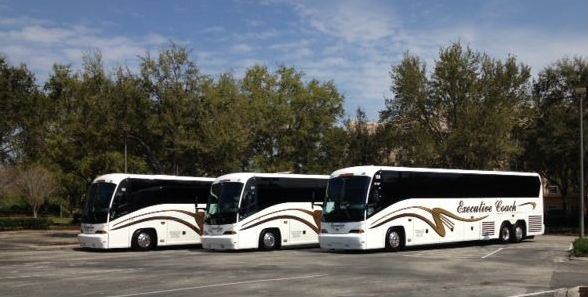
In December 2010, the DOT Federal Motor Carrier Safety Administration (FMCSA) unveiled a new Compliance, Safety, Accountability (CSA) program designed to enhance the agency’s truck-safety monitoring efforts.
Contrary to popular belief, the CSA program is not a set of rules or new regulations, but is rather an initiative. The CSA’s stated goal is to improve FMCSA’s enforcement and compliance program’s efficiency and effectiveness. Let’s take a closer look at what it does, and why it was needed.

Department of Transportation compliance programs are designed to help the FMCSA explore ways to improve its safety monitoring, carrier evaluation, and safety intervention processes and procedures. The Compliance, Safety, Accountability program specifically measures carrier safety performance and helps the FMCSA identify potentially unsafe carriers.
The program was born out of a study that began in the 1970s. Back then, Federal and State authorities partnered with industry stakeholders in an attempt to progressively reduce the number of commercial motor vehicle accidents that resulted in injuries or fatalities.
Before the CSA, the FMCSA safety rating and compliance review program was resource-heavy. It also didn’t have the scope that was required to ensure a majority of the nation’s carriers were in compliance. Under this model, onsite compliance reviews took days to complete. With their staffing levels, the FMCSA was only able to perform the reviews on a small fraction of the 700,000 registered interstate motor carriers.
The new model provides a level of nuance that the prior one did not. The FMCSA’s former SafeStat system measured safety performance in a one-size-fits-all way that didn’t focus enough on behavioral aspects of crashes. There also wasn’t much attention given to the drivers of commercial motor vehicles, which limited the data’s effectiveness.
The CSA is intended to build on former federal motor carrier safety regulations through enhanced procedures and a new suite of tools. Through the new and improved compliance review, the FMCSA seeks to create more targeted interventions tailored to address specific problems.
CSA is designed to create a better framework for enforcement and compliance processes. The FMCSA expects to be provided with a better window into how well large commercial vehicle carriers and drivers are doing at maintaining a high level of safety compliance.
The main thrust of the CSA is to effectively leverage both Federal and State resources for use in more efficiently addressing carrier problems before they result in dangerous situations. The enforcement and compliance portions are streamlined to work hand-in-hand, across multiple agencies.
The CSA operational model is intended to achieve its goals through the use of the following main components:
| Measurement – Gathering the data is just as important as knowing what to do with it. CSA will measure safety performance and use inspection and crash results to pinpoint carriers who are exhibiting high-risk behaviors that could lead to serious crashes. |
|
| Evaluation – The FMCSA will combine CSA with the Safety Fitness Determination methodology in order to determine when a specific safety problem is present. The increased efficiency of this model will allow a greater number of carriers and drivers to be contacted and specific interventions formulated. |
|
| Intervention – The new compliance program is designed to address a full spectrum of safety issues through quick and efficient intervention methods. Enforcement officials will have new tools at their disposal to address safety compliance problems and be far more effective in mitigating safety concerns. |
FMCSA has spent the better part of five years planning out these new initiatives. The first step involved thorough fact-finding. The agency reviewed past compliance procedures and then used the data to develop the Safety Measurement System (SMS).
The SMS uses roadside inspection data combined with crash information to provide unique solutions to carrier-specific problems. It is designed to provide new data sets that enforcement officials can use in their independent evaluations to find targeted solutions for complex, carrier-specific safety problems.
Knowing how the CSA model is more superior is one thing, but the actual details of the process from the motor carrier’s level will determine who requires intervention. So, how are motor carriers actually rated under the CSA?
The prior SafeStat model was good in providing a generalized analysis of a broad set of factors. Where it failed was in addressing specific actions that were resulting in unsafe conditions. Nor was it able to adequately pinpoint actual behaviors. In fact, it only provided three evaluation areas that had any real value in determining a carrier’s fitness.
CSA will change all of that. It provides seven different Behavioral Analysis and Safety Improvement Categories (BASICs) that govern motor carrier violations. These factors will combine with inspection and roadside data information to help determine the type of intervention necessary.
Here are the seven key BASIC categories that CSA will focus on:
Although freight carriers were more likely to violate one or more of the BASICs, almost four out of five carriers had no alerts at all. Unsurprisingly, the most common violation found among all carriers was fatigued driving.
When a BASIC is violated, an alert is created. This alert notifies the FMCSA that intervention is necessary. Data is compiled and an intervention strategy worked out.
A motor carrier’s BASIC scores are generated using the following process:
Every month, the FMCSA uploads the new data into SMS and places weights to each violation. The violations are rated on a scale from one to 10. If a violation is tied more closely to an increased crash risk, its weight will carry a higher severity.
The severity itself can vary based on incident type. In the case of a car-truck crash, for instance, the severity weights are based on whether there was an injury or fatality, or if it was minor and resulted in nothing more than a tow. Thus the scores aren’t static.
Within each of the seven categories covered by CSA BASICs, carriers not only receive a numerical score, but a ranking as well. In order to keep those rankings meaningful and consistent, carriers are compared with each other.
The comparisons are arranged by carrier size, operation type and the number of similar safety events applied to the carrier types. Within these groups, the carriers with the highest score receive a 100 percent ranking, while the lowest scores will receive a 0 percent, and the rest will float somewhere in between.

Even though the CSA has been a work in progress for the better part of five years, there’s still been a fair amount of hand wringing on the part of industries that operate commercial motor vehicles. New initiatives, rules and regulations place the onus on carriers to ensure they comply with the new standard.
The big question on everyone’s mind has been whether or not the CSA program — flaws and advantages included — will have an appreciable impact on trucking safety. Several outside studies have been conducted, each with the aim of breaking down exactly how CSA works and if it is a better alternative to what existed before it.
Any time a government agency releases new initiatives or rules, there’s bound to be those who agree and disagree with the changes. In these situations, the government or federal agency will generally request an independent evaluation from an accredited and impartial source.
In order to mitigate any potential backlash to the new initiative, the FMCSA asked for an independent evaluation from the University of Michigan Transportation Research Institute. The results of the CSA Operational Test Model run-through were released August 31, 2011.
Launched in 2008, the CSA Op-Model Test assessed motor carriers from Colorado, Georgia, Missouri and New Jersey. It also evaluated how effective the SMS and CSA interventions were and compared the cost effectiveness of the new CSA with the previous model. As the test model began to validate the effectiveness of CSA, they rolled it out to five more states, hoping to demonstrate that a national implementation was possible and provide the data to prove it.
The CSA Op-Model Test revealed the following:
With the test-run completed and the initiative ready for roll-out, other industry groups have been evaluating what kind of impact CSA will have on motor carriers. The existing data provides an interesting snapshot into how it will affect the motor carrier industry.
In effort to continue shedding light on the industry impact that CSA will have, several industry groups have undertaken their own independent studies. One such example is TransCore’s CarrierWatch survey.
This comprehensive study looked at a multitude of factors in evaluating approximately 166,000 for-hire interstate carriers. TransCore also took a look at which states had the highest number of alerts and what those alerts were for.
Here are some of what was gleaned from the CarrierWatch report:
Beyond the CSA data, CarrierWatch also took a look at the raw numbers behind CSA. Companies that operate commercial vehicles vary widely, so Carrierwatch wanted to see who was affected most by CSA from an industry perspective. It’s no surprise that for-hire interstate freight carriers see the greatest impact from CSA and BASIC scores.
Here’s what the CarrierWatch study found:
Although for-hire interstate freight carriers appear to be impacted the most from CSA, it is designed to address all businesses that employ the use of commercial vehicles and drivers. At Executive Coach, we operate an advanced and sophisticated fleet of commercial vehicles, so we also fall under the CSA umbrella. How have we been doing?
Here at Executive Coach, the safety and security of our passengers is number one on our list of priorities. We know how to stay CSA compliant. As a regional motor carrier, our geographic scope touches markets from Boston to Washington D.C. and places in between.
Transporting passengers between locations hundreds of miles apart in safety and comfort requires an exceptional level of attention to detail and communication between our staff and our drivers. While government intervention to maintain driver safety is important, we’ve been holding ourselves to a standard that’s as high, if not higher, than that being proposed by the FMCSA.
 We are proud to say we’ve been able to maintain CSA compliance throughout the years, with no significant alerts or interventions required. The health of our drivers and safety of our passengers are what have kept us in business all of these years. New safety initiatives only highlight the successful operations we already have in place.
We are proud to say we’ve been able to maintain CSA compliance throughout the years, with no significant alerts or interventions required. The health of our drivers and safety of our passengers are what have kept us in business all of these years. New safety initiatives only highlight the successful operations we already have in place.
If you’re traveling anywhere in central Pennsylvania or upper eastern seaboard and are looking for a carrier who doesn’t sacrifice safety or comfort for speed or extra dollars, give us a call. For more information about our company, read all about us on our website. Take a look at our available fleets or contact us today for more information.
Contact Us Now